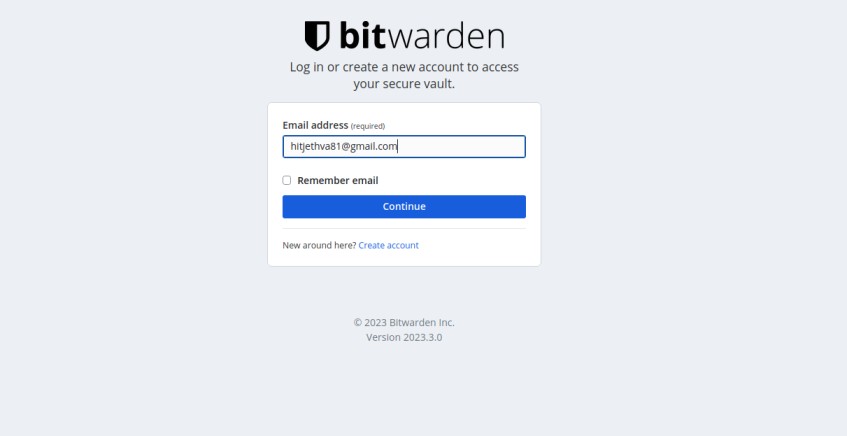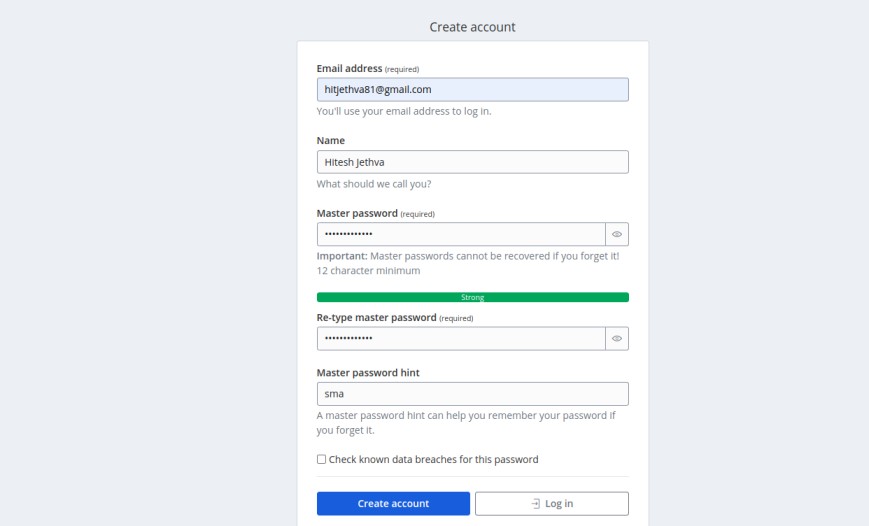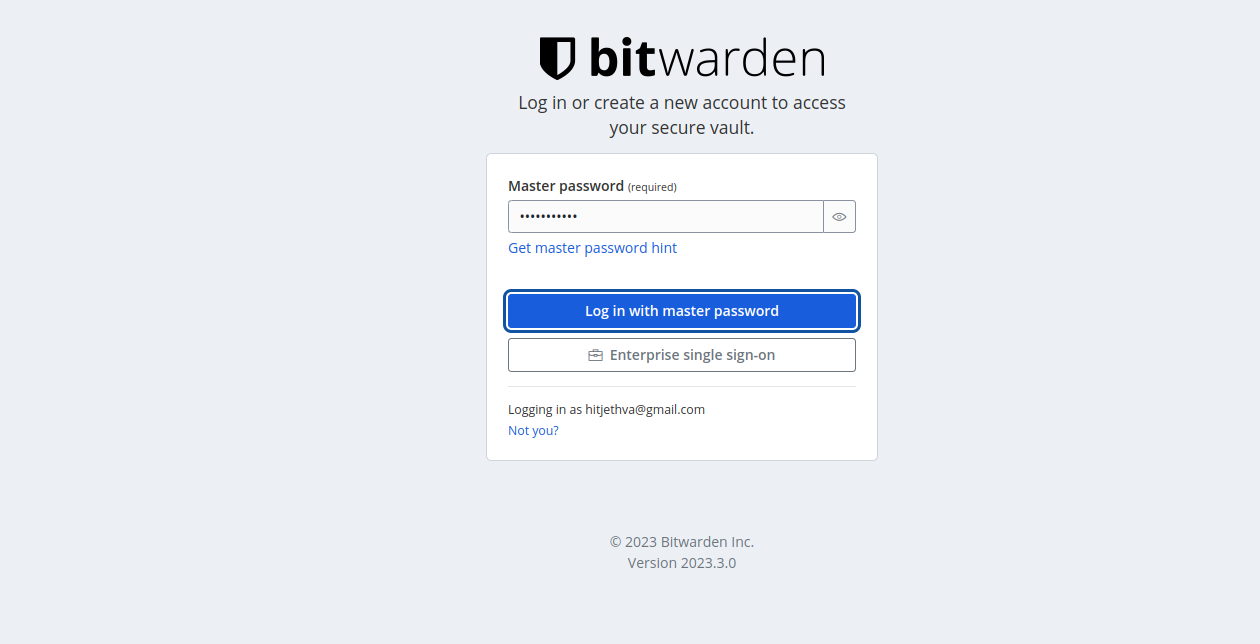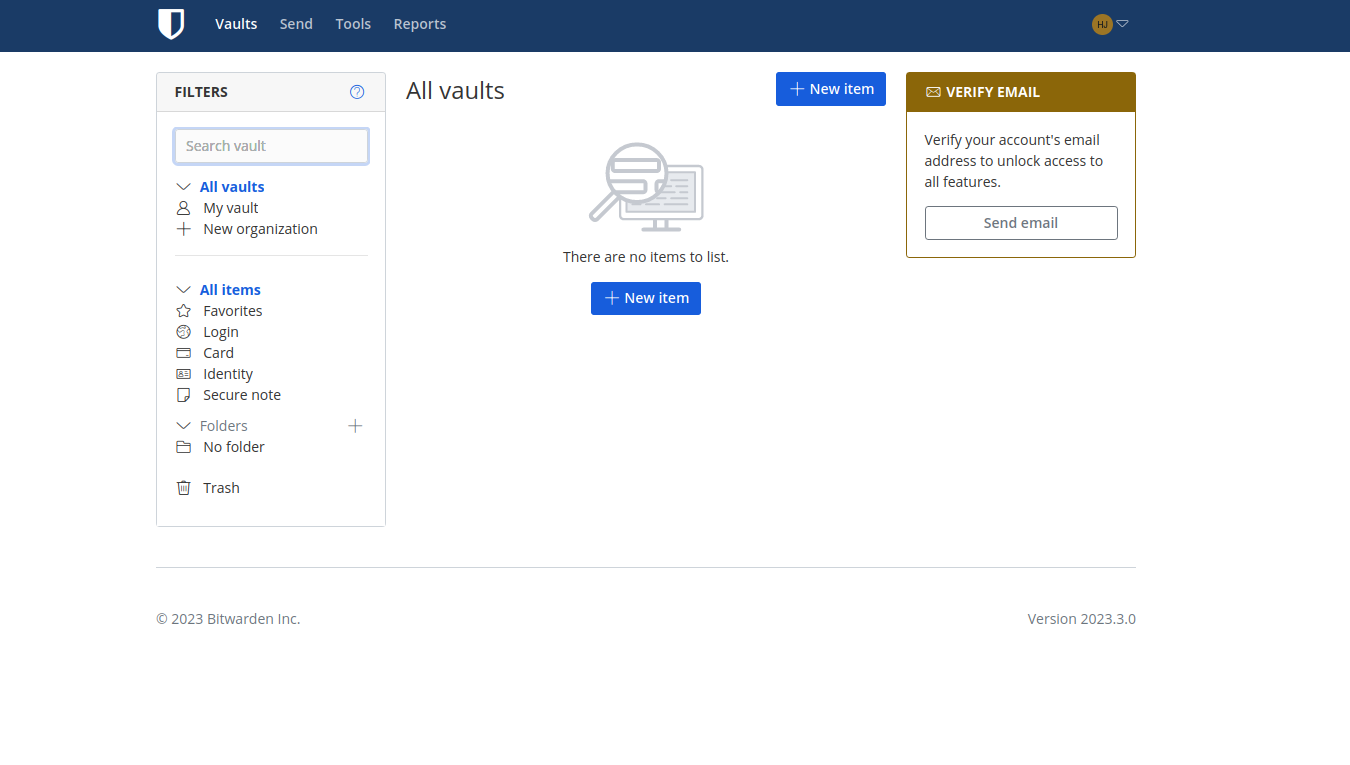Bitwarden is a fast, open-source password management solution trusted by millions of users worldwide. It stores all your passwords and sensitive information in an encrypted vault. You can store and manage all your login credentials in a central location and sync them across all devices. Bitwarden offers a client application for mobile, desktop, browser extensions, command line interface, and web interface.
In this post, we will show you how to install the Bitwarden password manager on Arch Linux.
Step 1 – Configure Repository
By default, the default repository is outdated in Arch Linux, so you will need to modify the default mirror list. You can do it by editing the mirror list configuration file:
nano /etc/pacman.d/mirrorlist
Remove all lines and add the following lines:
## Score: 0.7, United States Server = http://mirror.us.leaseweb.net/archlinux/$repo/os/$arch ## Score: 0.8, United States Server = http://lug.mtu.edu/archlinux/$repo/os/$arch Server = http://mirror.nl.leaseweb.net/archlinux/$repo/os/$arch ## Score: 0.9, United Kingdom Server = http://mirror.bytemark.co.uk/archlinux/$repo/os/$arch ## Score: 1.5, United Kingdom Server = http://mirrors.manchester.m247.com/arch-linux/$repo/os/$arch Server = http://archlinux.dcc.fc.up.pt/$repo/os/$arch ## Score: 6.6, United States Server = http://mirror.cs.pitt.edu/archlinux/$repo/os/$arch ## Score: 6.7, United States Server = http://mirrors.acm.wpi.edu/archlinux/$repo/os/$arch ## Score: 6.8, United States Server = http://ftp.osuosl.org/pub/archlinux/$repo/os/$arch ## Score: 7.1, India Server = http://mirror.cse.iitk.ac.in/archlinux/$repo/os/$arch ## Score: 10.1, United States Server = http://mirrors.xmission.com/archlinux/$repo/os/$arch
Save and close the file, then update all the package indexes with the following command:
pacman -Syu
Step 2 – Install Docker
Bitwarden can be installed using Docker, so Docker and Docker Compose packages must be installed on your server. If not installed, you can install both by running the following command.
pacman -S docker docker-compose
Once Docker is installed, enable the Docker service to start at system reboot.
systemctl enable docker
Next, restart your system to apply the system.
reboot
Step 3 – Install Bitwarden
First, download the Bitwarden installation script using the following command.
curl -Lso bitwarden.sh https://go.btwrdn.co/bw-sh
Next, set executable permissions on the downloaded file.
chmod +x bitwarden.sh
Now, run the downloaded script to start the installation.
./bitwarden.sh install
You will be asked to define your domain or IP address, select Let’s Encrypt SSL and database as shown below:
_ _ _ _ | |__ (_) |___ ____ _ _ __ __| | ___ _ __ | '_ \| | __\ \ /\ / / _` | '__/ _` |/ _ \ '_ \ | |_) | | |_ \ V V / (_| | | | (_| | __/ | | | |_.__/|_|\__| \_/\_/ \__,_|_| \__,_|\___|_| |_| Open source password management solutions Copyright 2015-2023, 8bit Solutions LLC https://bitwarden.com, https://github.com/bitwarden =================================================== bitwarden.sh version 2023.3.0 Docker version 23.0.1, build a5ee5b1dfc Docker Compose version 2.17.0 (!) Enter the domain name for your Bitwarden instance (ex. bitwarden.example.com): 104.219.55.77 (!) Do you want to use Let's Encrypt to generate a free SSL certificate? (y/n): n (!) Enter the database name for your Bitwarden instance (ex. vault): vault
Answer all the questions then press the Enter key. You will be asked to provide your Bitwarden installation id and key:
2023.3.0: Pulling from bitwarden/setup 3f9582a2cbe7: Pull complete d866aec6058e: Pull complete 11332129480d: Pull complete 9f9b514859b0: Pull complete b709e83c5e9e: Pull complete 1f8900615ea1: Pull complete 47137b35c8bf: Pull complete b7b87e36a4d9: Pull complete 223d50917a39: Pull complete 23ee09621502: Pull complete Digest: sha256:e09da2acdedd62819dd1fe774935d1a215058244cc6e1c18203bb65cf845f70c Status: Downloaded newer image for bitwarden/setup:2023.3.0 docker.io/bitwarden/setup:2023.3.0 (!) Enter your installation id (get at https://bitwarden.com/host): Installation ID (!) Enter your installation key: Installation Key
Provide your installation ID and key and press the Enter key. You will be asked for SSL certificates.
(!) Do you have a SSL certificate to use? (y/n): n (!) Do you want to generate a self-signed SSL certificate? (y/n): y
Choose your preferred options and press the Enter key. Once the installation is completed, you will get the following output.
Generating self signed SSL certificate. Generating a RSA private key ....................................++++ .................................................++++ writing new private key to '/bitwarden/ssl/self/104.219.55.77/private.key' ----- Generating key for IdentityServer. Generating a RSA private key ..............................++++ ........++++ writing new private key to 'identity.key' ----- Building nginx config. Building docker environment files. Building docker environment override files. Building FIDO U2F app id. Building docker-compose.yml. Installation complete If you need to make additional configuration changes, you can modify the settings in `./bwdata/config.yml` and then run: `./bitwarden.sh rebuild` or `./bitwarden.sh update` Next steps, run: `./bitwarden.sh start`
Step 4 – Start the Bitwarden
After successful installation, you can start the Bitwarden using the following command.
./bitwarden.sh start
If everything is fine, you will get the following output.
[+] Running 89/11 ✔ events 5 layers [⣿⣿⣿⣿⣿] 0B/0B Pulled 28.3s ✔ identity 5 layers [⣿⣿⣿⣿⣿] 0B/0B Pulled 41.9s ✔ icons 5 layers [⣿⣿⣿⣿⣿] 0B/0B Pulled 39.2s ✔ notifications 5 layers [⣿⣿⣿⣿⣿] 0B/0B Pulled 31.7s ✔ web 11 layers [⣿⣿⣿⣿⣿⣿⣿⣿⣿⣿⣿] 0B/0B Pulled 30.5s ✔ nginx 15 layers [⣿⣿⣿⣿⣿⣿⣿⣿⣿⣿⣿⣿⣿⣿⣿] 0B/0B Pulled 10.2s ✔ mssql 9 layers [⣿⣿⣿⣿⣿⣿⣿⣿⣿] 0B/0B Pulled 82.1s ✔ api 9 layers [⣿⣿⣿⣿⣿⣿⣿⣿⣿] 0B/0B Pulled 11.2s ✔ sso 5 layers [⣿⣿⣿⣿⣿] 0B/0B Pulled 17.7s ✔ attachments 4 layers [⣿⣿⣿⣿] 0B/0B Pulled 27.5s ✔ admin 5 layers [⣿⣿⣿⣿⣿] 0B/0B Pulled 40.0s [+] Running 13/13 ✔ Network docker_default Created0.0s ✔ Network docker_public Created0.1s ✔ Container bitwarden-attachments Started2.4s ✔ Container bitwarden-sso Started4.9s ✔ Container bitwarden-mssql Started1.0s ✔ Container bitwarden-web Started1.8s ✔ Container bitwarden-identity Started4.0s ✔ Container bitwarden-notifications Started4.2s ✔ Container bitwarden-api Started4.9s ✔ Container bitwarden-events Started4.8s ✔ Container bitwarden-icons Started4.7s ✔ Container bitwarden-admin Started4.7s ✔ Container bitwarden-nginx Started6.6s 2023.3.0: Pulling from bitwarden/setup Digest: sha256:e09da2acdedd62819dd1fe774935d1a215058244cc6e1c18203bb65cf845f70c Status: Image is up to date for bitwarden/setup:2023.3.0 docker.io/bitwarden/setup:2023.3.0 Bitwarden is up and running! =================================================== visit http://104.219.55.77 to update, run `./bitwarden.sh updateself` and then `./bitwarden.sh update`
You can now verify the Bitwarden container status with the following command.
docker ps
You should see the following output.
CONTAINER ID IMAGE COMMAND CREATED STATUS PORTS NAMES 158a32601c48 bitwarden/nginx:2023.3.0 "/entrypoint.sh" 24 seconds ago Up 17 seconds (health: starting) 80/tcp, 0.0.0.0:80->8080/tcp, :::80->8080/tcp, 0.0.0.0:443->8443/tcp, :::443->8443/tcp bitwarden-nginx ff726721653e bitwarden/admin:2023.3.0 "/entrypoint.sh" 24 seconds ago Up 19 seconds (health: starting) 5000/tcp bitwarden-admin 82165ad0a2fb bitwarden/attachments:2023.3.0 "/entrypoint.sh" 24 seconds ago Up 22 seconds (health: starting) bitwarden-attachments b066cc257c91 bitwarden/web:2023.3.0 "/entrypoint.sh" 24 seconds ago Up 22 seconds (health: starting) bitwarden-web 3556668964b6 bitwarden/notifications:2023.3.0 "/entrypoint.sh" 24 seconds ago Up 20 seconds (health: starting) 5000/tcp bitwarden-notifications 4d283de21017 bitwarden/identity:2023.3.0 "/entrypoint.sh" 24 seconds ago Up 20 seconds (health: starting) 5000/tcp bitwarden-identity e46b0bc8fbf5 bitwarden/api:2023.3.0 "/entrypoint.sh" 24 seconds ago Up 19 seconds (health: starting) 5000/tcp bitwarden-api 50409251986e bitwarden/mssql:2023.3.0 "/entrypoint.sh" 24 seconds ago Up 23 seconds (health: starting) bitwarden-mssql 83b214e36cd7 bitwarden/events:2023.3.0 "/entrypoint.sh" 24 seconds ago Up 19 seconds (health: starting) 5000/tcp bitwarden-events e5090c0b53e2 bitwarden/sso:2023.3.0 "/entrypoint.sh" 24 seconds ago Up 19 seconds (health: starting) 5000/tcp bitwarden-sso cc449cb26fb8 bitwarden/icons:2023.3.0 "/entrypoint.sh" 24 seconds ago Up 19 seconds (health: starting) 5000/tcp
Step 5 – Access Bitwarden Web UI
At this point, Bitwarden is started and listening on port 80. You can access it using the URL https://your-server-ip. You should see the Bitwarden login page.
Click on the Create account page. You should see the following page.
Define your email, username, and password, and click on the Create account button. You should see your login screen.
Provide your master password and click on Login with master password. You should see the Bitwarden dashboard on the following screen.
Conclusion
In this post, you learned how to install the Bitwarden password manager on Arch Linux. You can now implement Bitwarden in your organization and start managing all credentials from a central location. You can try to install Bitwarden password manager on dedicated server hosting from Atlantic.Net!



